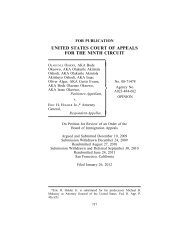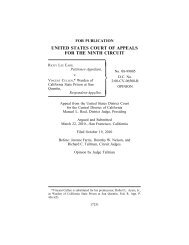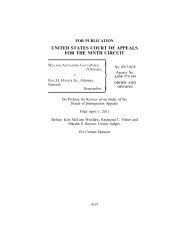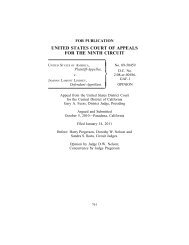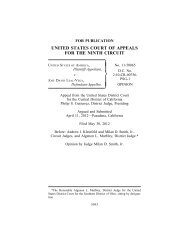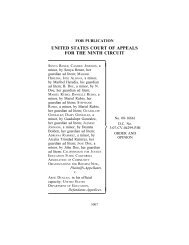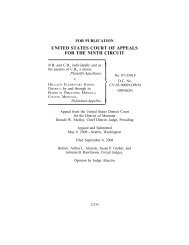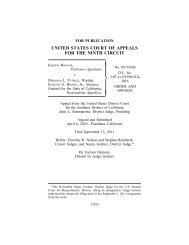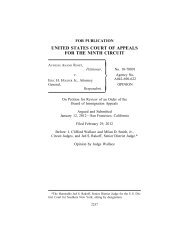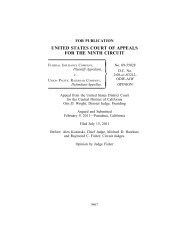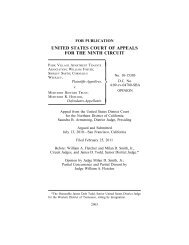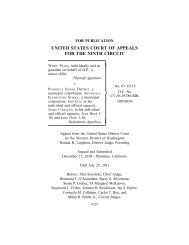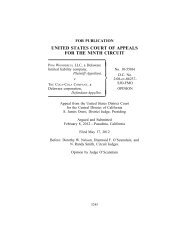USA v. Xavier Alvarez - Ninth Circuit Court of Appeals
USA v. Xavier Alvarez - Ninth Circuit Court of Appeals
USA v. Xavier Alvarez - Ninth Circuit Court of Appeals
You also want an ePaper? Increase the reach of your titles
YUMPU automatically turns print PDFs into web optimized ePapers that Google loves.
UNITED STATES v. ALVAREZ<br />
whole, do not have serious literary, artistic, political, or scientific<br />
value”).<br />
[15] Thus, false factual speech as a general category is not,<br />
and cannot be, proscribed under threat <strong>of</strong> criminal prosecution.<br />
Although certain subsets <strong>of</strong> false factual speech have<br />
been declared unprotected, such classes <strong>of</strong> speech were developed<br />
as the result <strong>of</strong> thoughtful constitutional analysis <strong>of</strong> what<br />
other characteristics the speech must have before it can be<br />
proscribed without clashing with First Amendment protections.<br />
The Act does not fit neatly into any <strong>of</strong> those “welldefined”<br />
and “narrowly limited” classes <strong>of</strong> speech previously<br />
considered unprotected, and we thus are required to apply the<br />
highest level <strong>of</strong> scrutiny in our analysis.<br />
IV<br />
11875<br />
Before performing the customary First Amendment analysis,<br />
however, we consider alternatively what may perhaps be<br />
better authority for the view that the maliciously stated false<br />
factual speech is historically unprotected— not Gertz and the<br />
unique universe <strong>of</strong> defamation jurisprudence, or the law <strong>of</strong><br />
fraud, but Schenck v. United States, as suggested by <strong>Alvarez</strong><br />
in his appeal. There, Justice Holmes famously noted that<br />
“[t]he most stringent protection <strong>of</strong> free speech would not protect<br />
a man in falsely shouting fire in a theater and causing a<br />
panic.” 249 U.S. 47, 52 (1919). Although Schenck was concerned<br />
with seditious speech, it is particularly instructive here,<br />
given that the “clear and present danger” test emerged from<br />
the “fire in a theater” hypothetical, which is quintessentially<br />
about a false statement <strong>of</strong> fact.<br />
Generalizing from the “fire in a theater” hypothetical, Justice<br />
Holmes went on to hold that “[t]he question in every case<br />
is whether the words used are used in such circumstances and<br />
are <strong>of</strong> such a nature as to create a clear and present danger<br />
that they will bring about the substantive evils that Congress<br />
has a right to prevent. It is a question <strong>of</strong> proximity and



